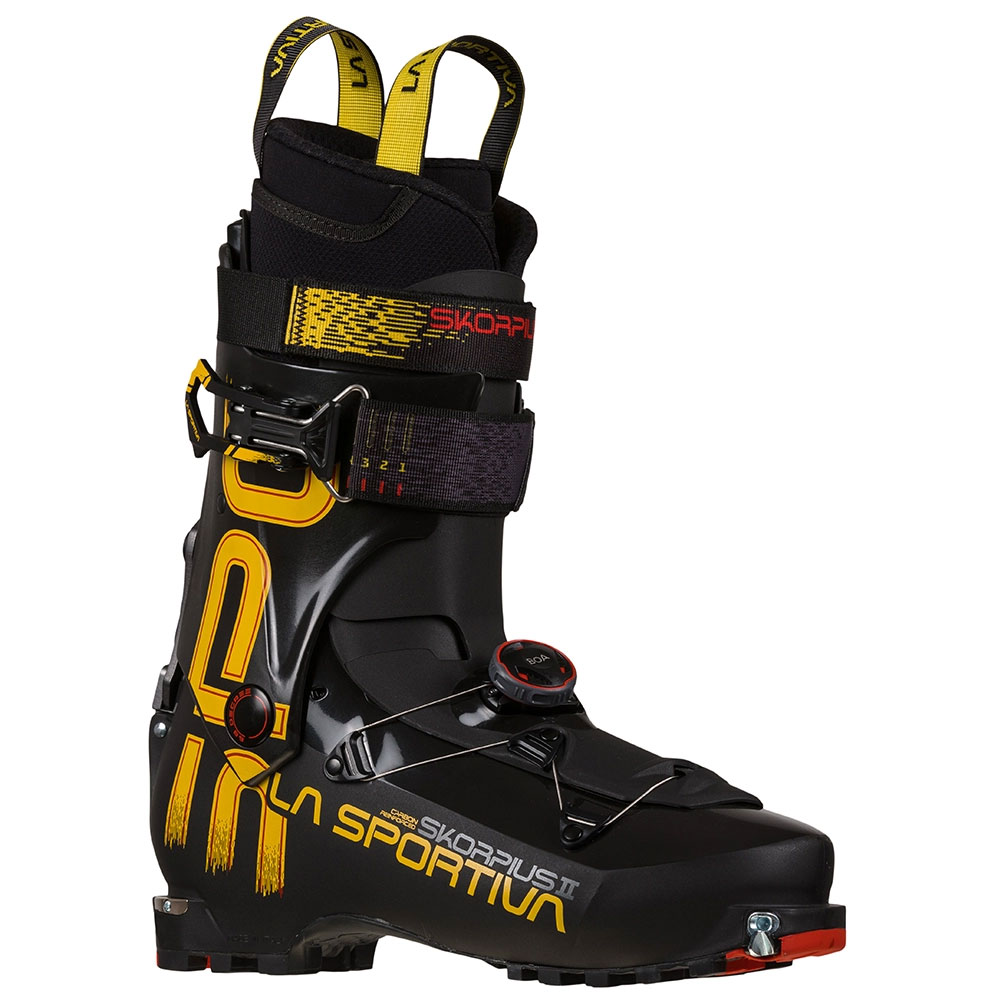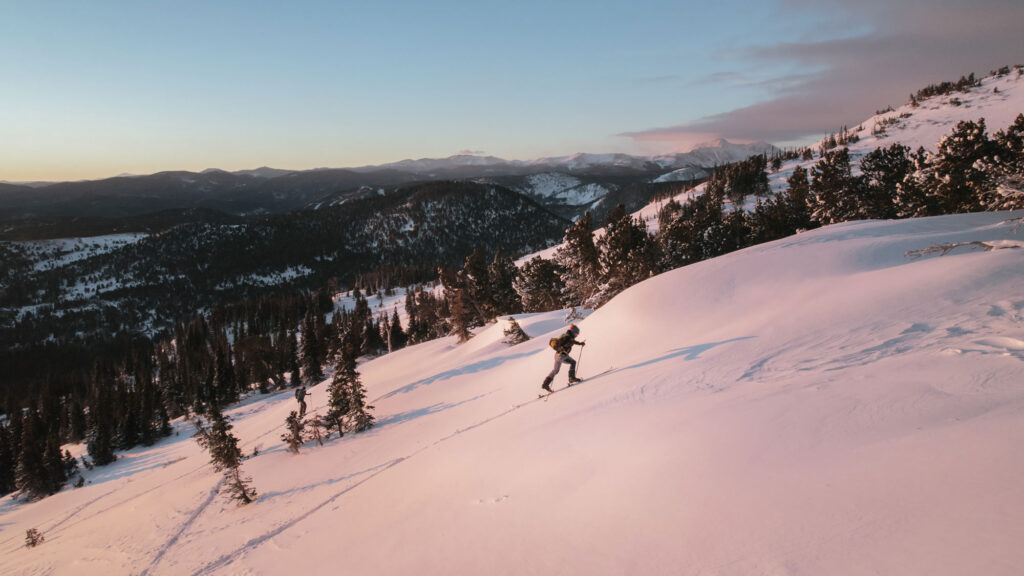- February 8, 2023
Tags
La Sportiva Makes Ski-Touring More Accessible
Backcountry skiing has a very high barrier to entry. You need to buy expensive touring gear and avalanche equipment, take expensive and time-intensive avalanche safety courses, and spend countless hours becoming a capable downhill skier. But when it comes to the actual activity of skinning, well, anyone who can walk uphill qualifies.
This is why ski-touring at resorts—also referred to as uphill skiing, fitness skinning, or, more loosely, skimo—has exploded in popularity. It’s a great workout, there are no lift lines, and it’s safe—no avalanche training required as long as you stick to the approved uphill routes. These skiers represent a relatively new demographic in the sport, and premier Italian backcountry skiing brand La Sportiva is banking that their new boot, the Skorpius CR II, will be these skiers’ tool of choice.
Weighing only 1,190 g (one size 27 boot) and boasting a 69-degree range of motion, the Skorpius CR II is made to ski up and down resort slopes. It has a heat-moldable liner and an anatomical shell that fits most feet right out of the box. (Based in the Dolomites, La Sportiva is known for its technical footwear and ski boot R&D.)
But the most notable thing about this boot is its flex. Its stated index is 100—stout for a boot this light—but its carbon-reinforced cuff and shell feels even stiffer than others in its class, making it surprisingly capable on the descents. (Some skimo racing boots feel like you’re skiing downhill wearing slippers, which are especially challenging for those who aren’t expert skiers.) The carbon reinforced cuff has stiffness and skiability, and a nice progressive flex, making the Skorpius a great choice for ski mountaineers who prize lightness for longer summit missions, too.
Skimo racer Davide Giardini, a former professional triathlete and alpine ski racer who qualified for the 2021-2022 U.S. National Ski Mountaineering Team, found that skinning uphill is one of the best exercises for endurance athletes. As a teenager, Giardini clearly remembers seeing older folks skinning up the mountains while he was ski racing in the Italian Alps. “When I was younger, I looked at it as a kooky sport—why would anyone want to do that?” he says, laughing. Now, more than a decade later, he wishes he had incorporated it into his pro-triathlon training.
“One of the key training benefits of ski touring is activating the whole posterior chain—glutes , core, hamstrings, calves, and dorsals—all of which almost magically switch on when you’re going uphill and defying gravity. When these muscles are dormant, they are the root cause of many health issues. And, this might surprise some, but most triathletes, runners, and cyclists are notoriously quad-dominant, with their biggest muscles shut off by the sheer amount of flat, repetitive, and one-dimensional training these sports entail. When training 30 hours per week as a pro triathlete, I spent so much money on physical therapy, dry needling, and strength training just to get the posterior chain activated and firing. I wish I had found out sooner that skinning up a mountain was the best natural and (mostly) free way for that.”
Skinning up mountains also provides a much-needed break from the often monotonous repetitive training of cycling, running, and swimming. Being in the mountains and taking in the snowy peaks and snow-coated trees is good for our brains and emotional well-being, which adds to its health benefits. “The variety that ski touring provides, you can’t put a price on that,” Giardini says.
For those who are just getting into the sport, there can be a bit of a learning curve. Beginners need to learn how to cut skins and take them on and off, operate the bindings, and learn how the boots work—which in some cases can involve complicated processes like removing the tongue and flipping intricate levers and buckles.
To that end, La Sportiva has made the Skorpius boot incredibly easy to use: It has one power-strap buckle and a Boa closure on the forefoot that cinches the boot quickly without having to take gloves off. A swing-lock closure on the back switches between walk and ski mode with ease, without having to worry whether it’s going to stay put.
“If a boot requires more than two steps to transition between uphill/downhill mode, that adds to the complexity of the sport, which turns people away,” Giardini says. “This boot is a good direction for Sportiva to go in—it’s so intuitive you don’t need an instruction manual. The Boa closure is also a huge upgrade. It’s so simple to use.”
Giardini feels that with this boot, La Sportiva has opened the gates of uphill skiing even wider. “I constantly interact with people who are interested in ski touring and yet are scared—for good reason—of heading into the backcountry,” he says. “This boot makes ski touring more accessible to a greater audience.”




